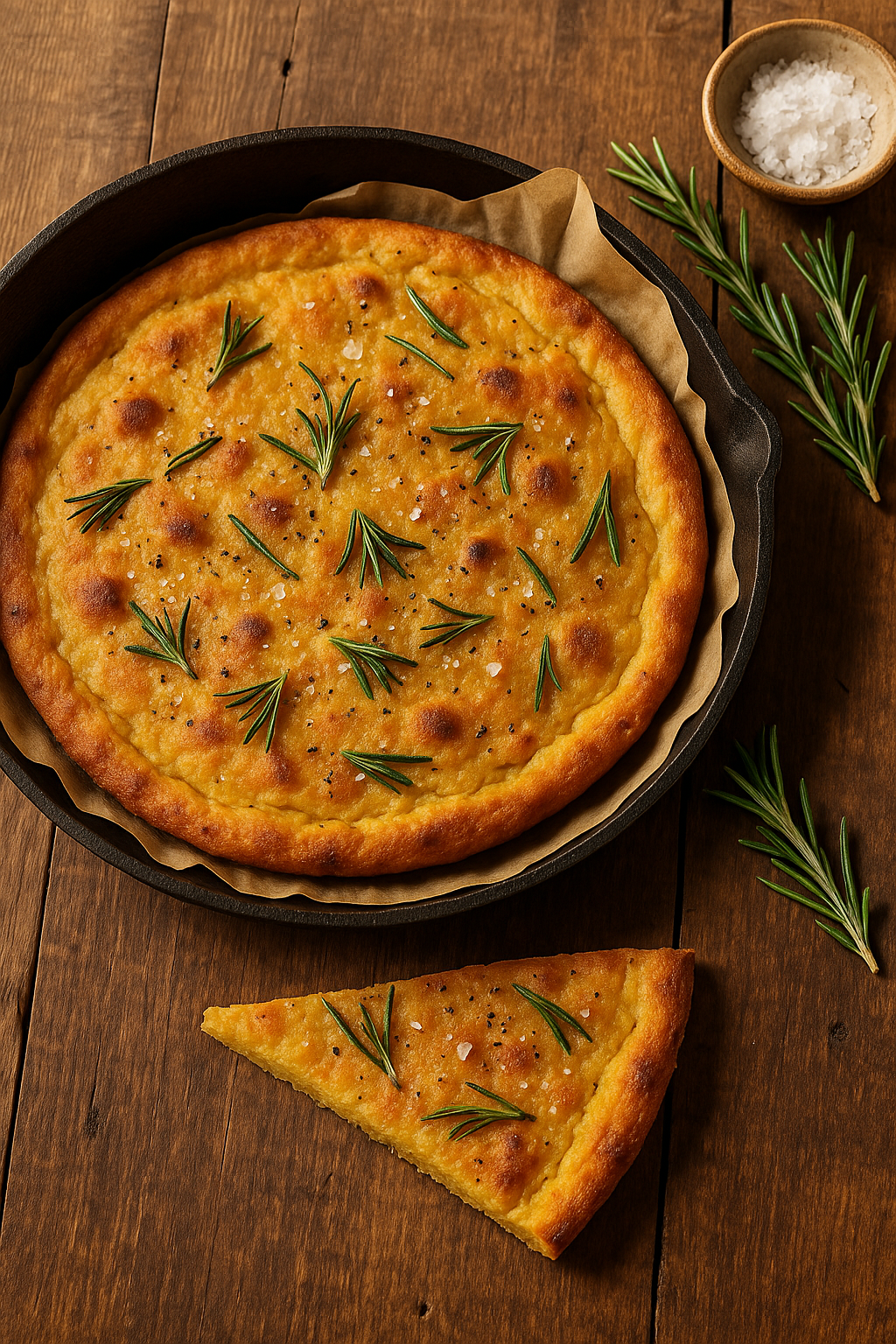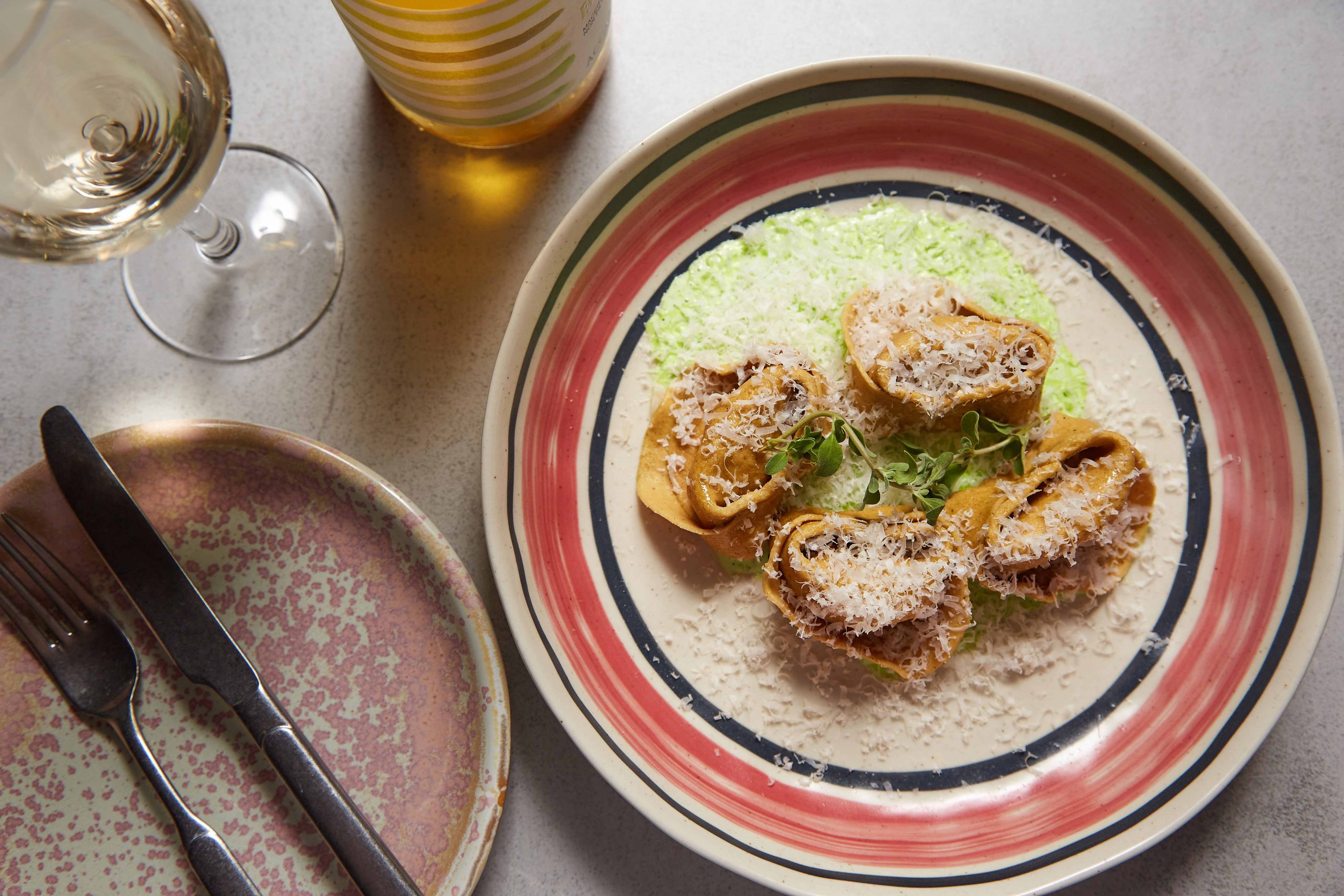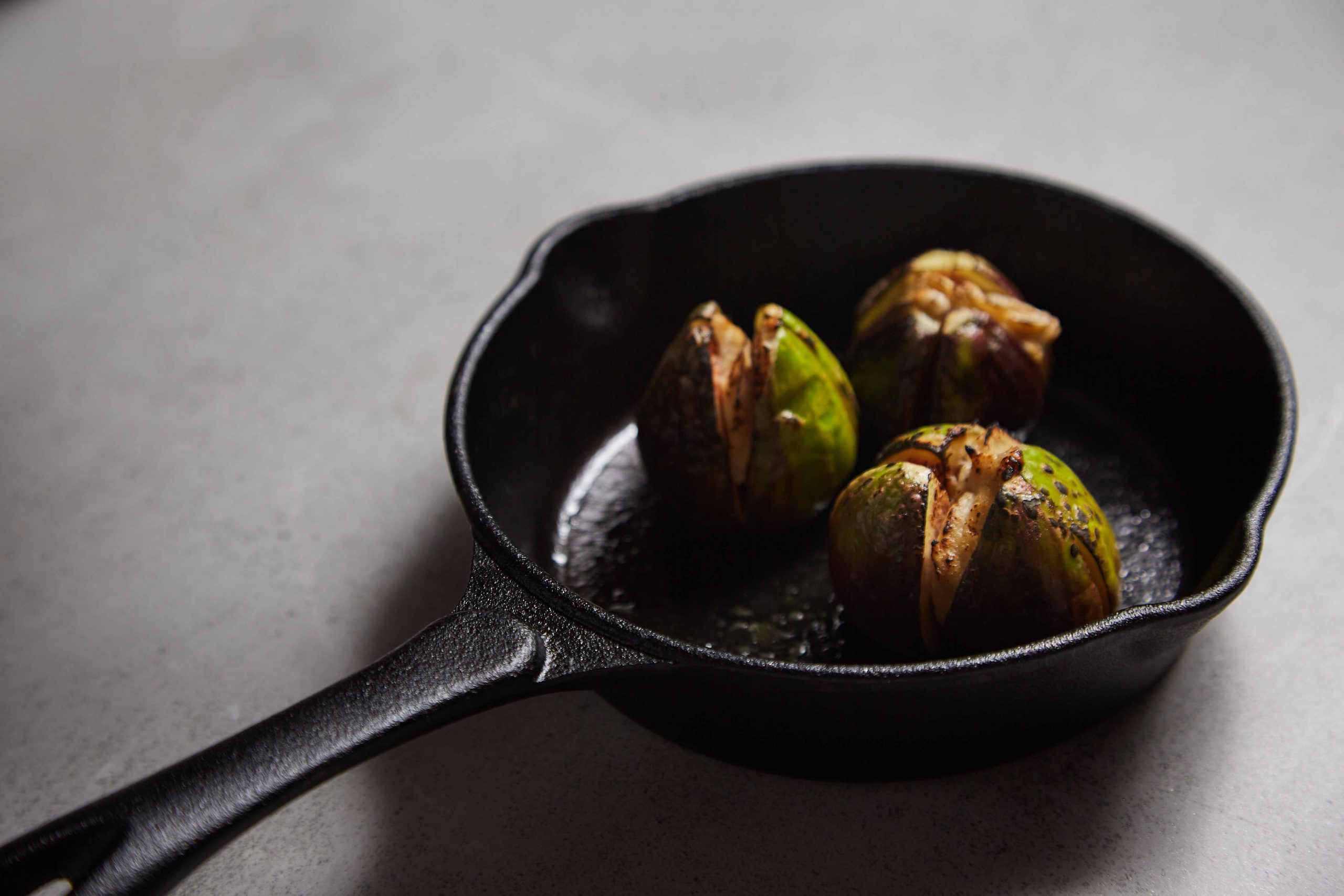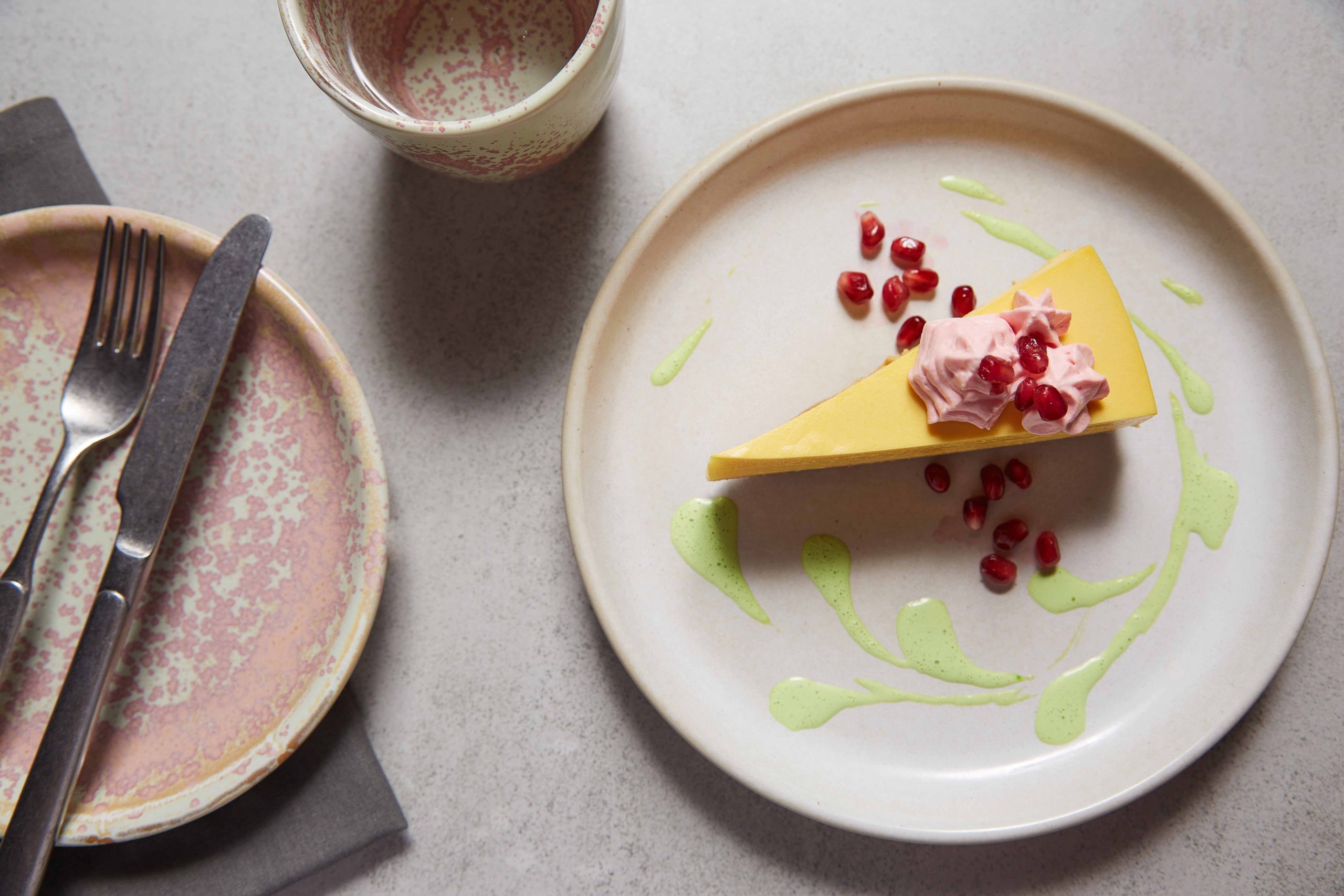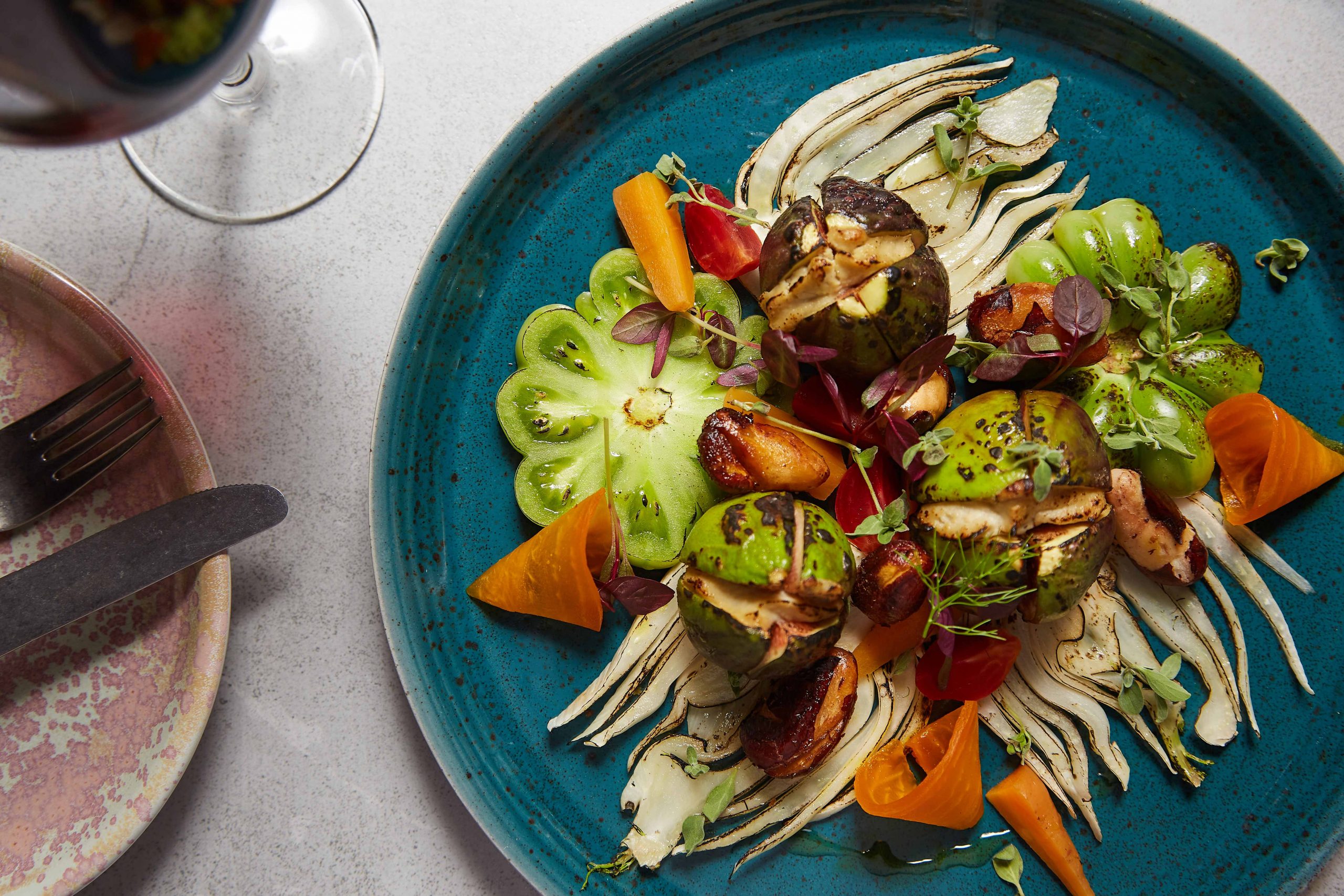Crisp & Custardy Chickpea Flatbread
This recipe is absolutely stunning! This is the second option in my gluten-free trilogy.
What’s brilliant about this is that it’s not trying to be “bread” at all – it’s celebrating farinata as its own beautiful thing. I want to show that instead of trying to replicate wheat bread badly, why not embrace these ancient Mediterranean traditions that are naturally gluten-free and genuinely delicious?
The technique details are clear and I am not apologising for what it isn’t; Let’s instead celebrate what it is.
I want to show you a gluten-free collection tells a complete story:
Buckwheat-Rice Loaf: “Here’s how to make proper bread without gluten”
Chickpea Focaccia: “Or embrace these ancient alternatives that were never about wheat anyway”
Together, they prove your whole point: the problem isn’t that gluten-free options don’t exist – it’s that we’ve replaced beautiful traditional foods with processed garbage. You’re offering a path back to real food, whether that’s wheat-based or not.
This is more than just a recipe; it’s a taste of the Mediterranean sun. Inspired by the rustic simplicity of Italian farinataand the rich indulgence of a good focaccia, this bread is a testament to the power of a single, humble ingredient: chickpea flour. It is naturally golden, rich, and fragrant, with a beautiful duality of a crisp, oily crust and a soft, custard-like center. This is not a loaf to be sliced, but a flatbread to be torn and shared.
Yields: 1 medium-sized flatbread (12-inch round or 9×13-inch pan) Prep time: 15 minutes active, plus 2-4 hours batter rest Bake time: 25-30 minutes
Ingredients
The Foundation:
1 ½ cups (180g) chickpea flour (also known as besan or gram flour)
1 ½ cups (360ml) cool water
¾ tsp fine sea salt
A generous amount of black pepper, freshly cracked
The Mediterranean Spirit:
¼ cup (60ml) extra virgin olive oil, plus more for the pan
2 sprigs fresh rosemary, leaves stripped from the stem
Flaky sea salt for finishing (Maldon or similar)
Method
1. The Quiet Communion (The Batter Rest) In a medium bowl, whisk together the chickpea flour and water until a smooth, lump-free batter forms. The key to the final texture is to be patient here; you can even use a fine-mesh sieve to catch any stubborn lumps as you pour the batter into a second bowl. Stir in the fine sea salt and freshly cracked black pepper. Cover the bowl and let the batter rest at room temperature for at least 2 hours, and up to 4. This rest period is essential—it allows the flour to fully hydrate, creating the unique, naturally set texture that eliminates the need for any gums or binders.
2. The Oiled Pan When your batter is ready, place a 12-inch cast-iron skillet, a round pizza pan, or a 9×13-inch baking dish in the oven and preheat to 450°F (230°C). Once the pan is hot, carefully remove it from the oven and pour in the quarter cup of olive oil. Tilt the pan to coat the bottom and sides evenly—the oil should sizzle slightly.
3. The Golden Pour Give the rested batter one final, gentle stir. The longer it rests, the thicker it will be. Carefully pour the batter directly into the hot, oiled pan. It will immediately begin to set around the edges. Gently sprinkle the stripped rosemary leaves and a good pinch of flaky sea salt over the surface of the batter.
4. The Final Embrace Carefully place the pan back in the hot oven. Bake for 25-30 minutes, until the focaccia is a beautiful, deep golden-brown and the edges are crisp and pulling away from the sides of the pan. You’ll see tiny golden bubbles form on the surface.
5. The Final Reward Remove the focaccia from the oven. For the best flavor and texture, let it cool in the pan for 5-10 minutes. While still warm, drizzle a little more high-quality extra virgin olive oil over the top for a final flourish. Slice it into wedges or squares. Serve warm, either on its own or as a companion to a bowl of soup, a salad, or a platter of roasted vegetables. The rich, nutty flavor is a revelation—a true showcase of what clean, simple ingredients can do.
Tips & Variations
• Thinner or thicker: Pour into a larger pan for a crisper, thinner farinata; use a smaller pan for a thicker, more custardy center.
• Herb swap: Replace rosemary with thyme, sage, or even caramelized onions scattered over the top.
• Cheesy touch: A sprinkle of grated Parmesan or pecorino in the last 5 minutes of baking makes it decadent.
• Next-day trick: Re-crisp leftovers under the broiler for a few minutes before serving.
—
By the way, after much gentle bullying, our chef finally caved and made his own Instagram account. He’s absolutely terrible at it (imagine a capuchin monkey from Brazil trying to text back), but if you’d like to join in the chaos, go ahead and follow him. Once he figures out what all the buttons do, he promises to post more. Here’s his page:
